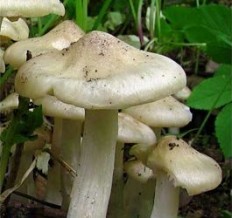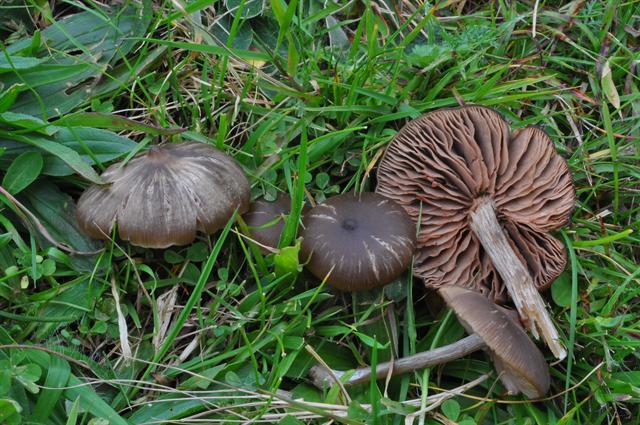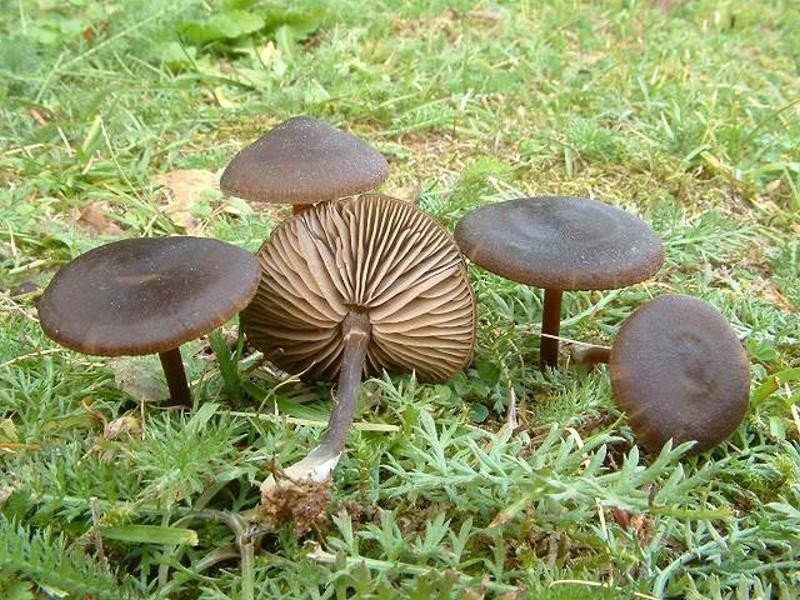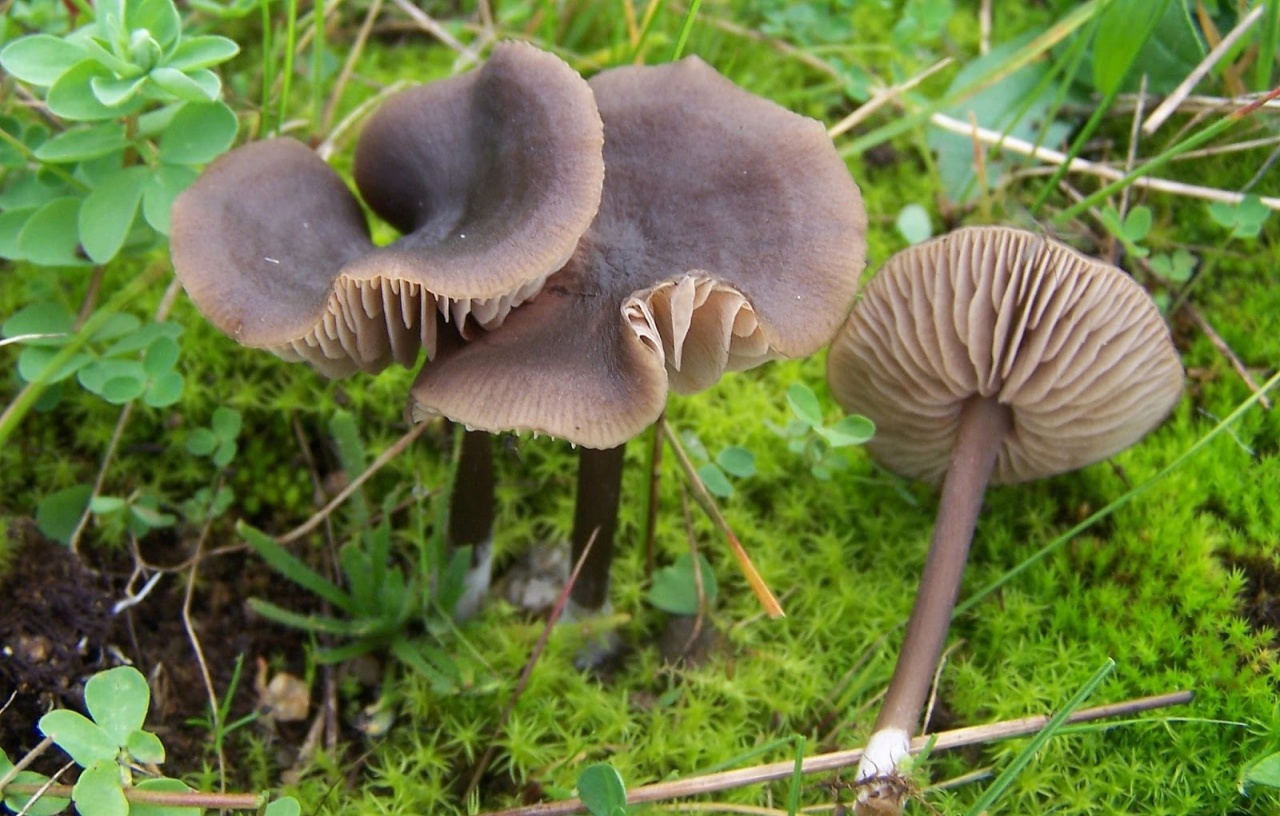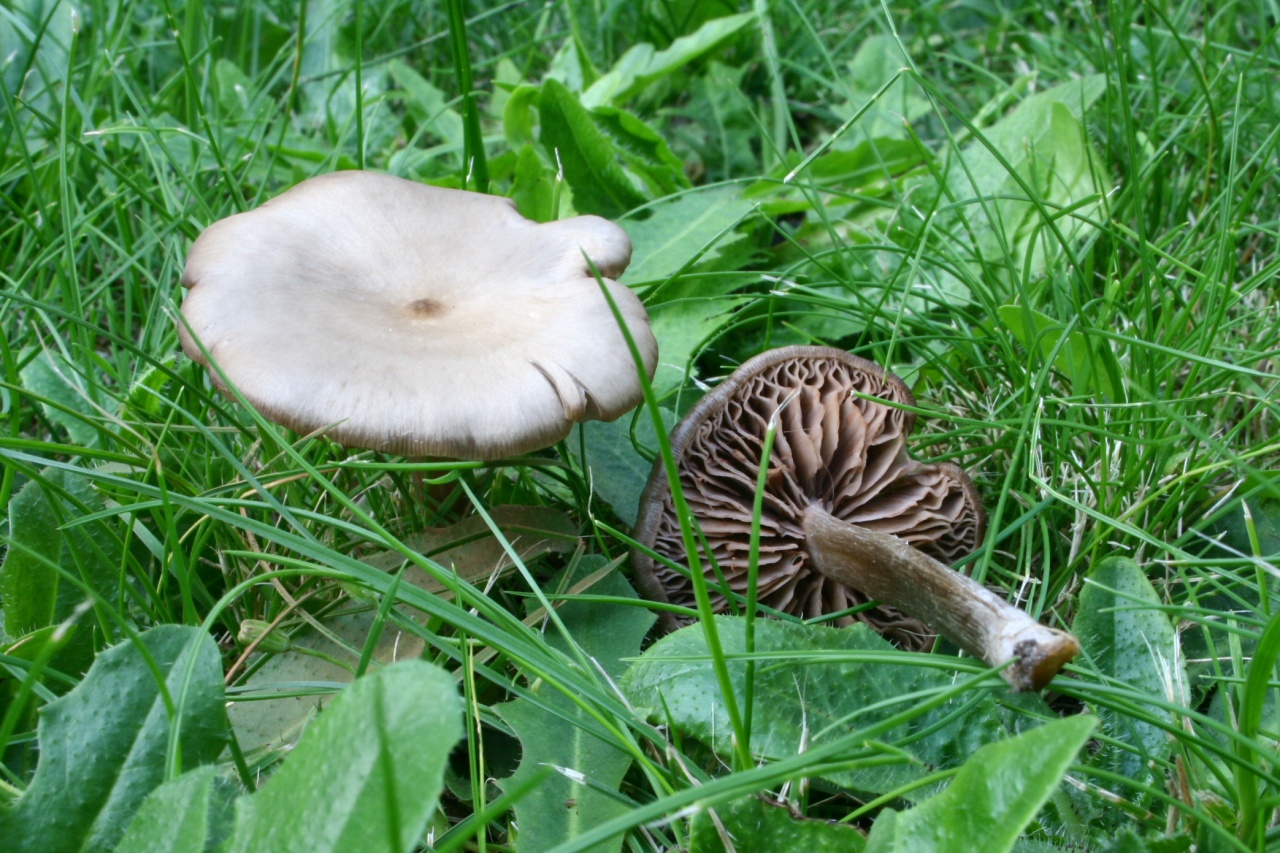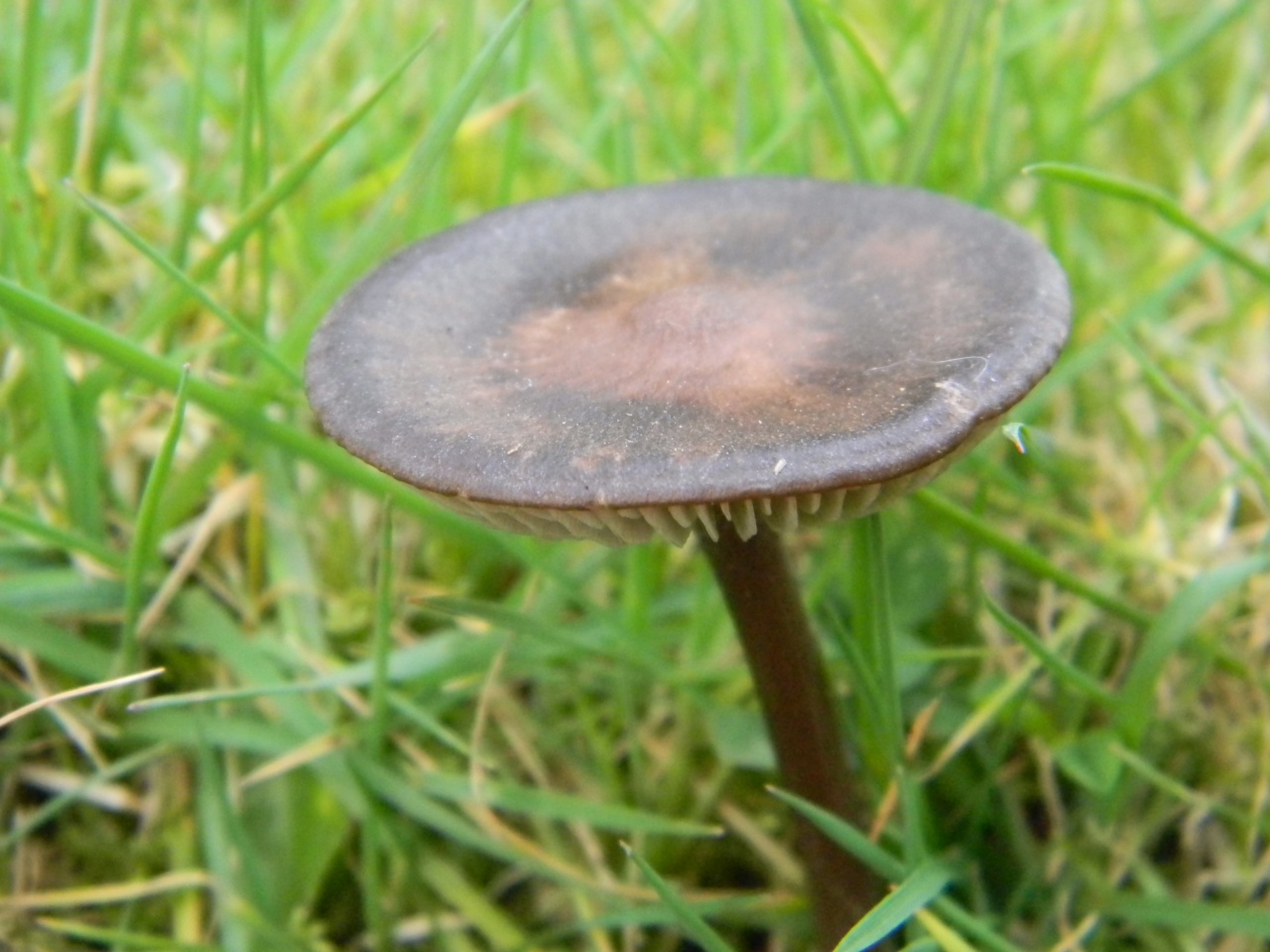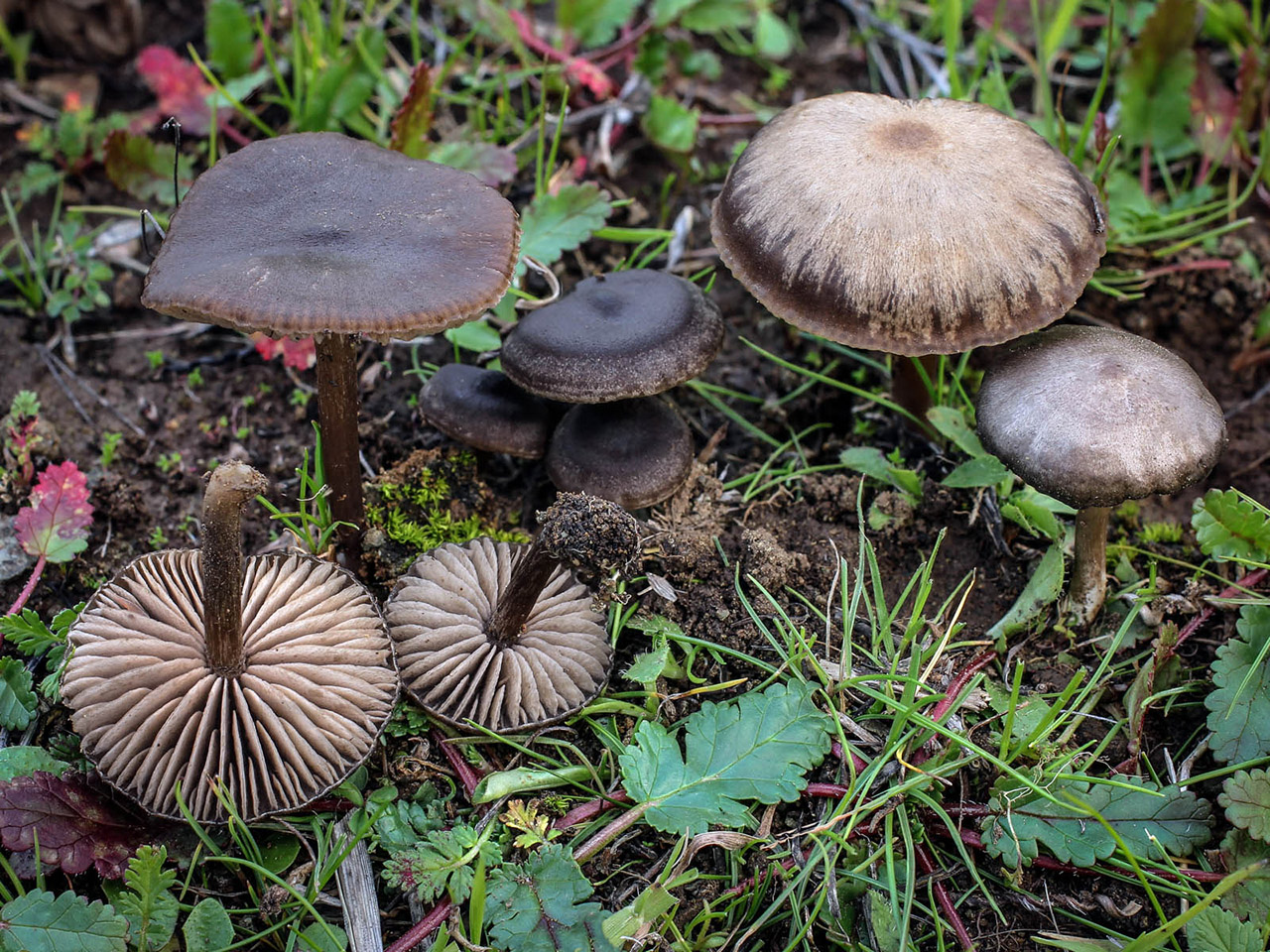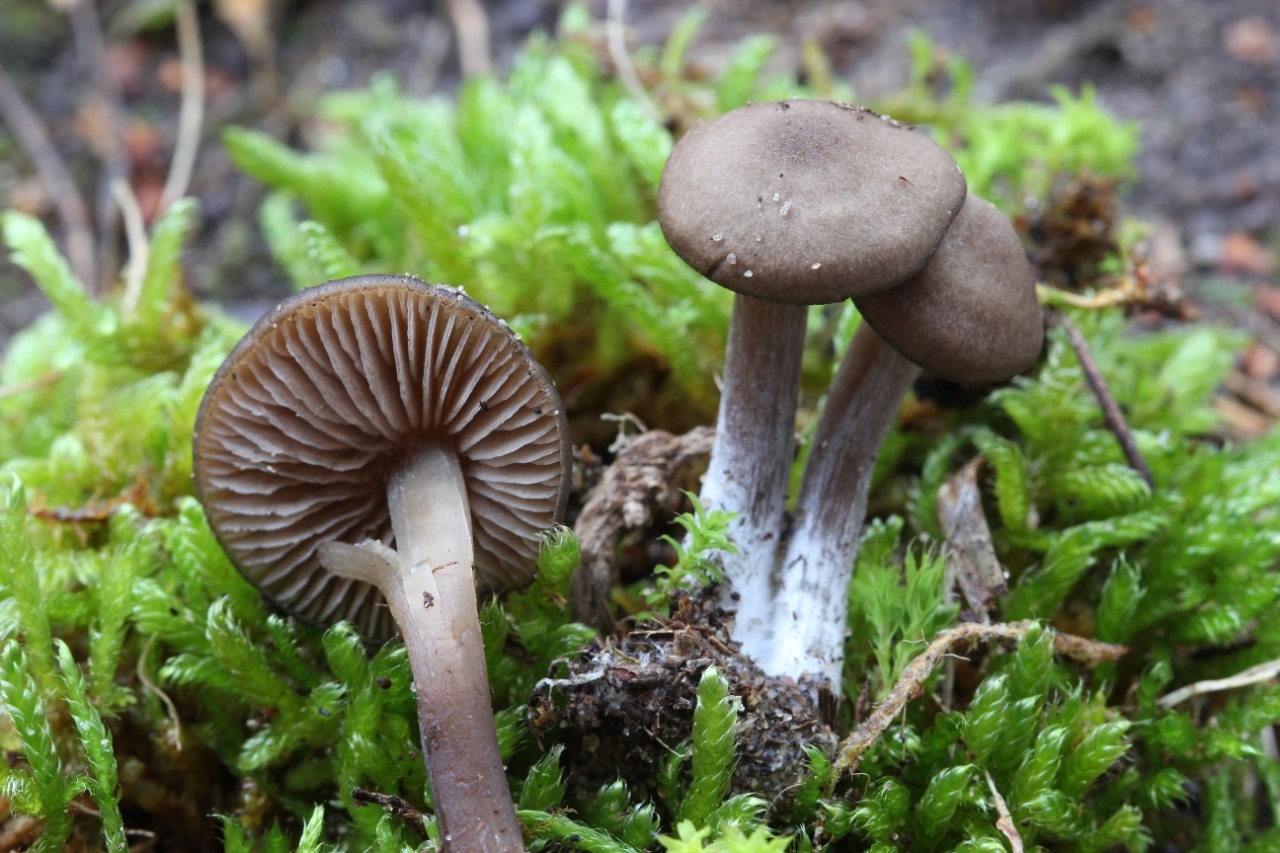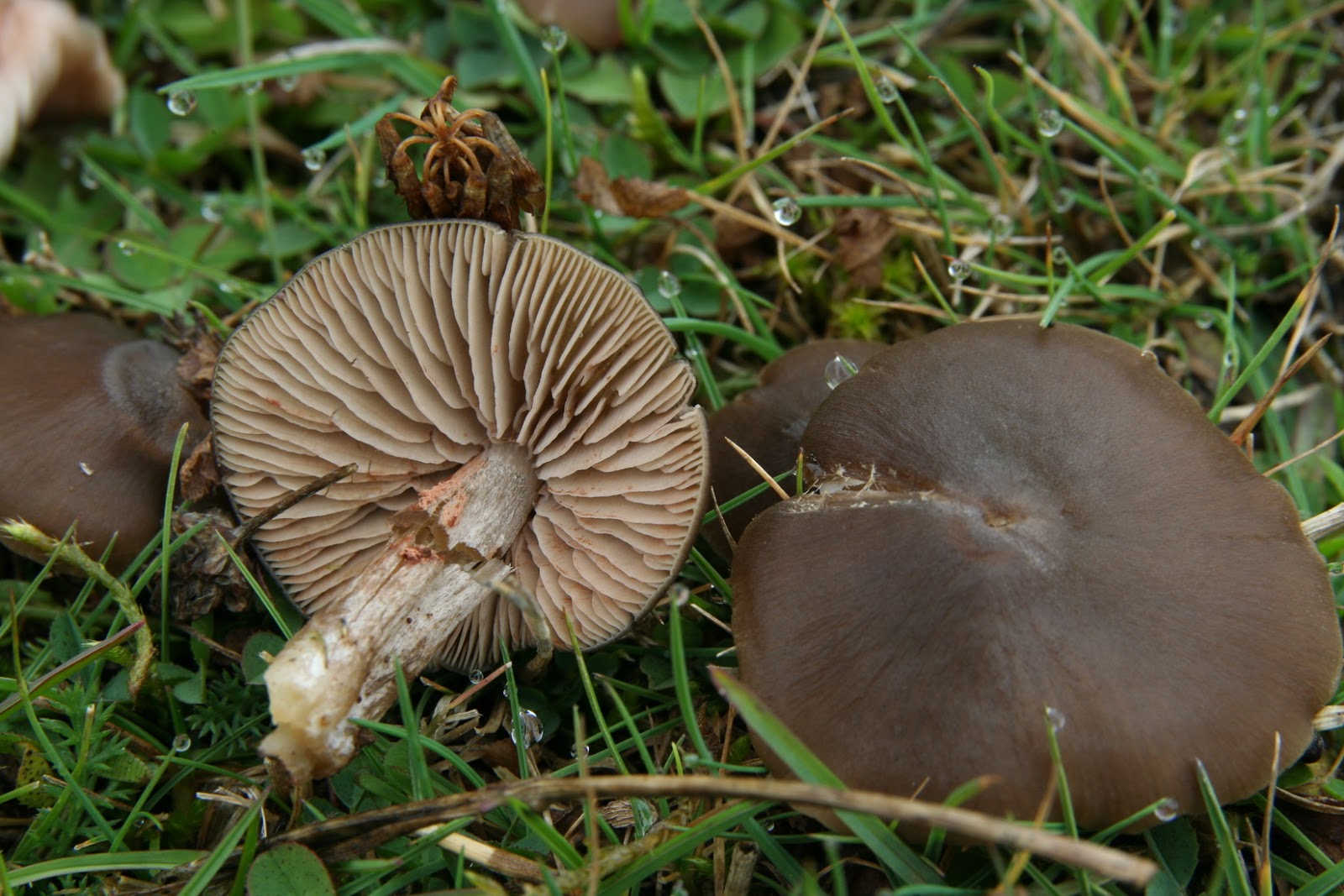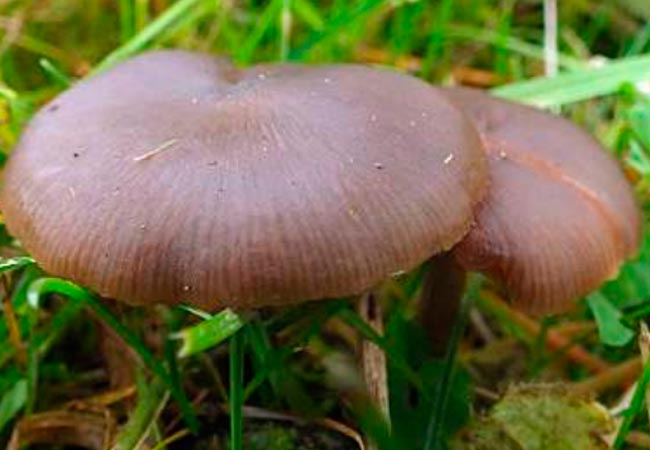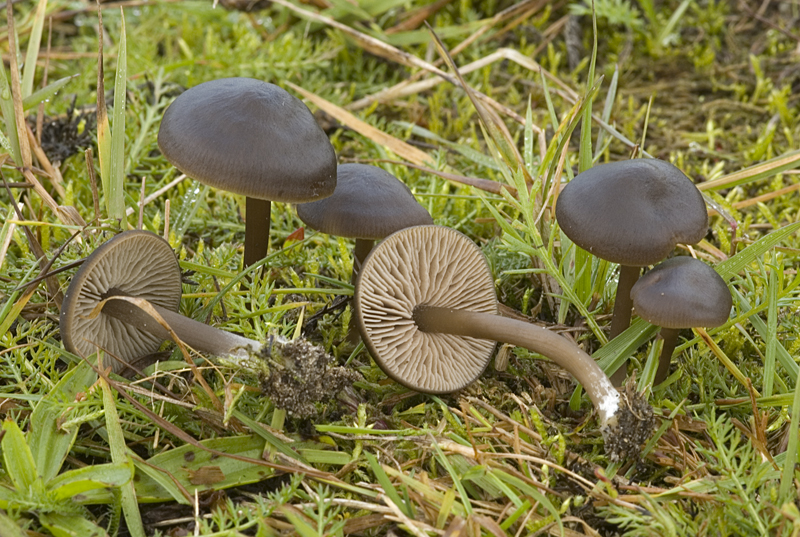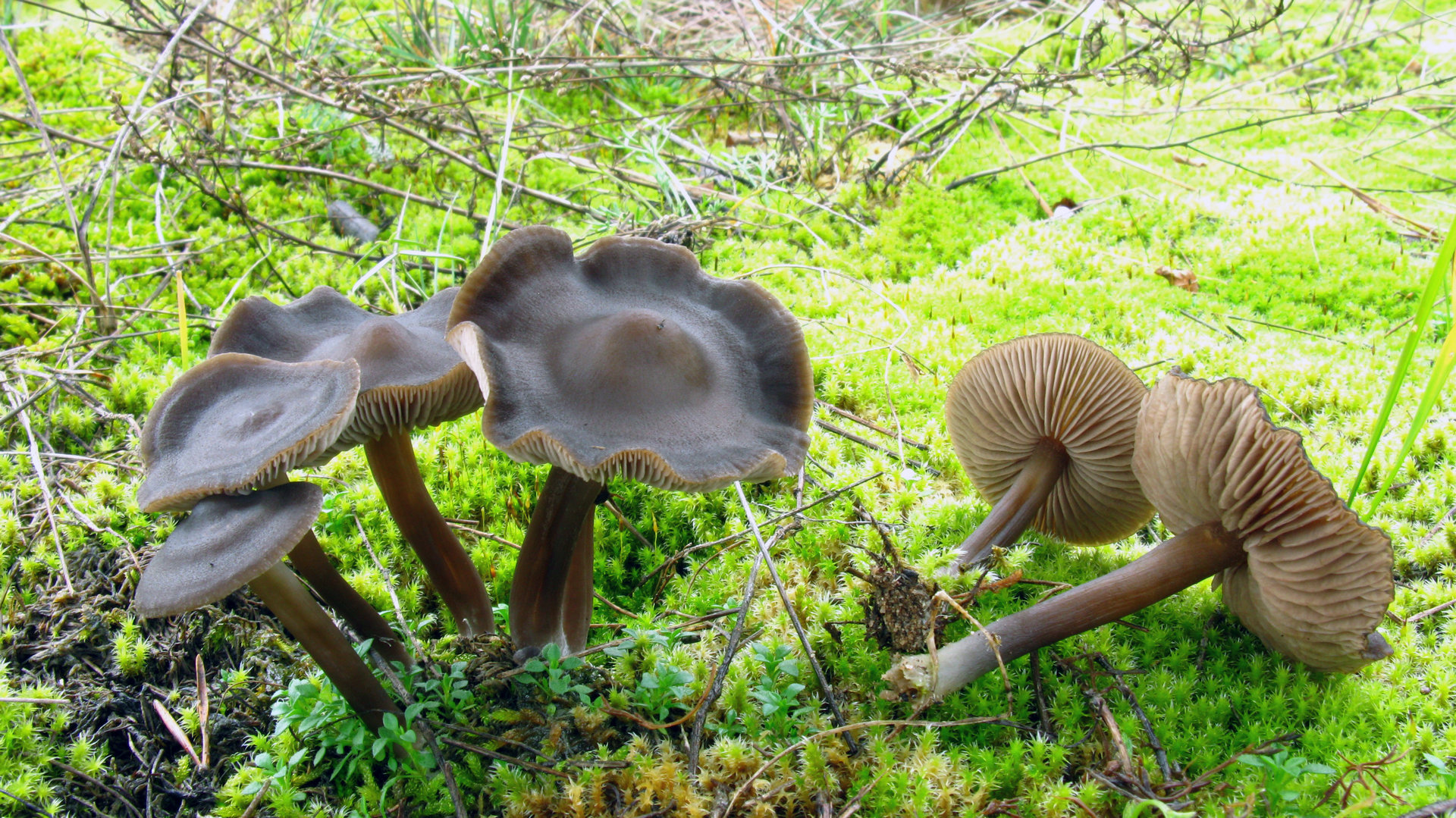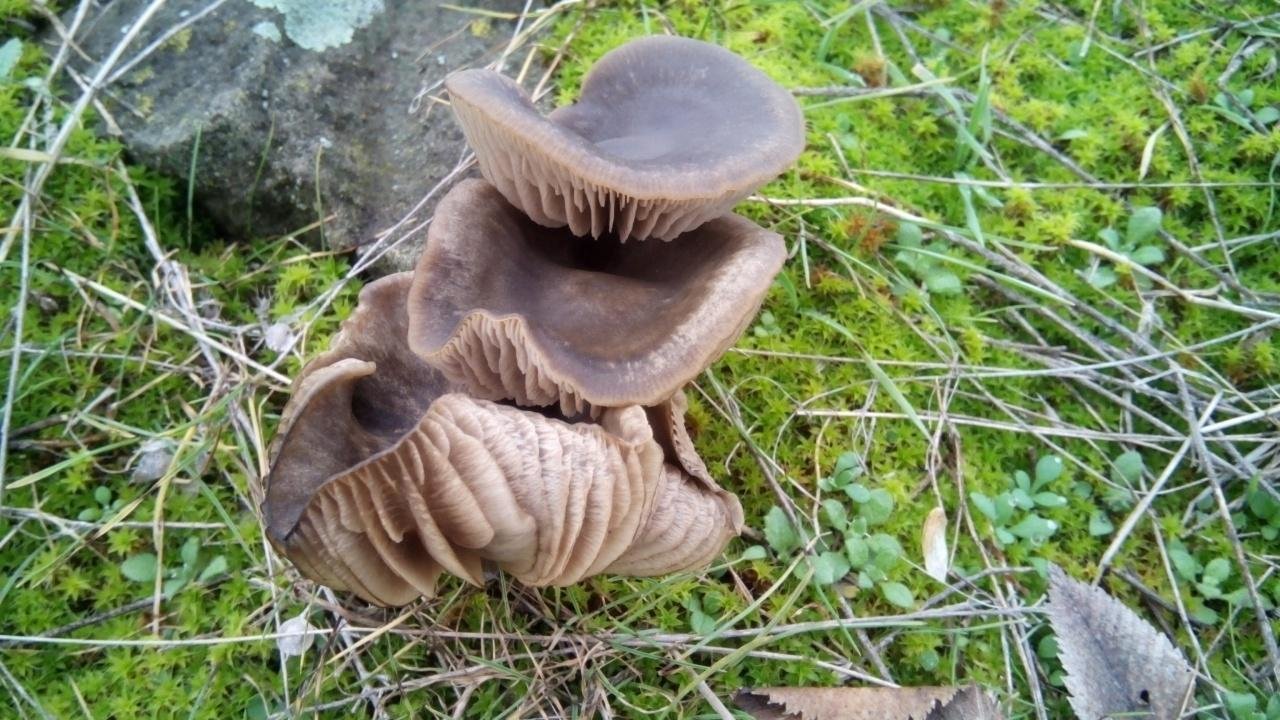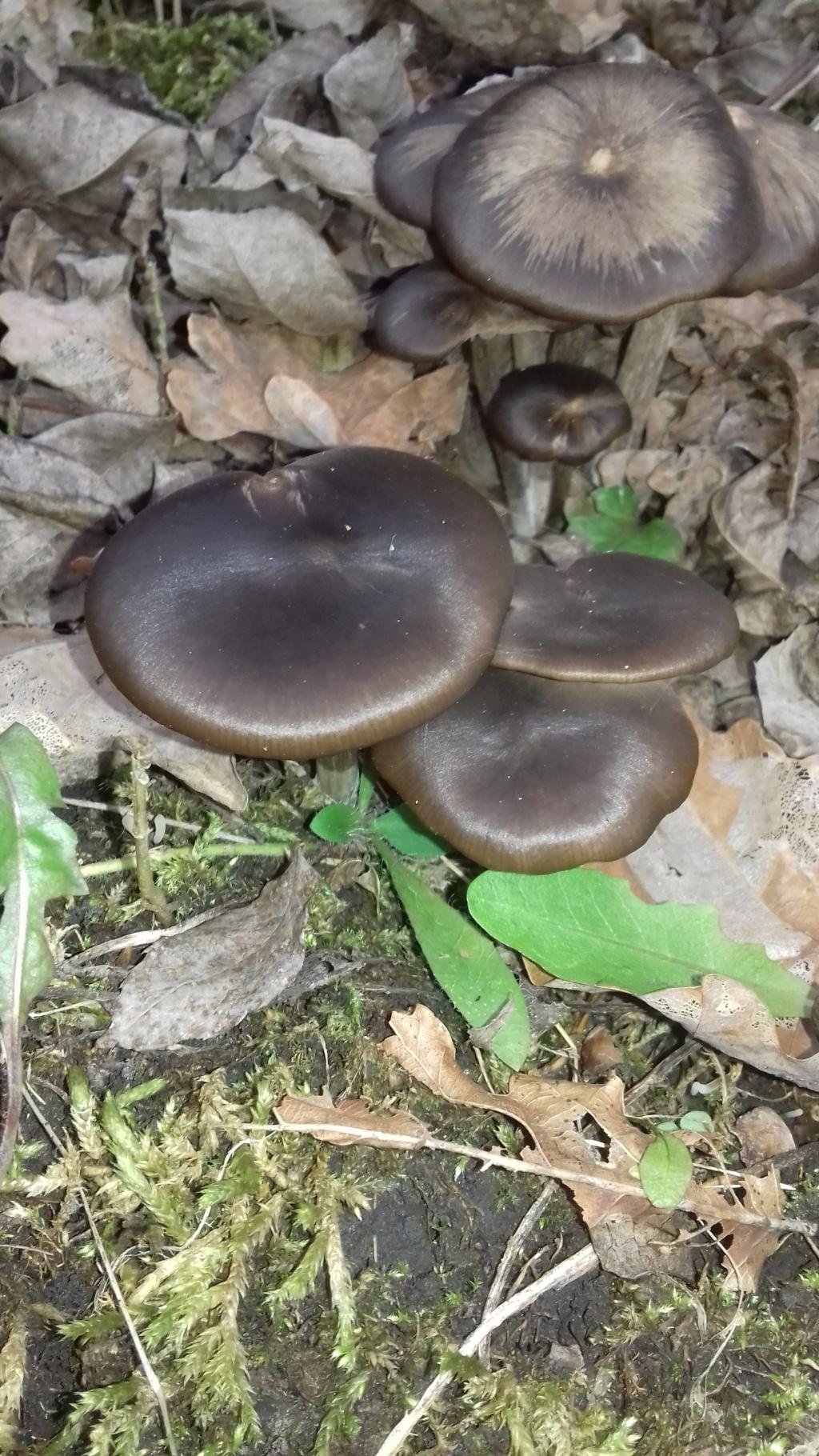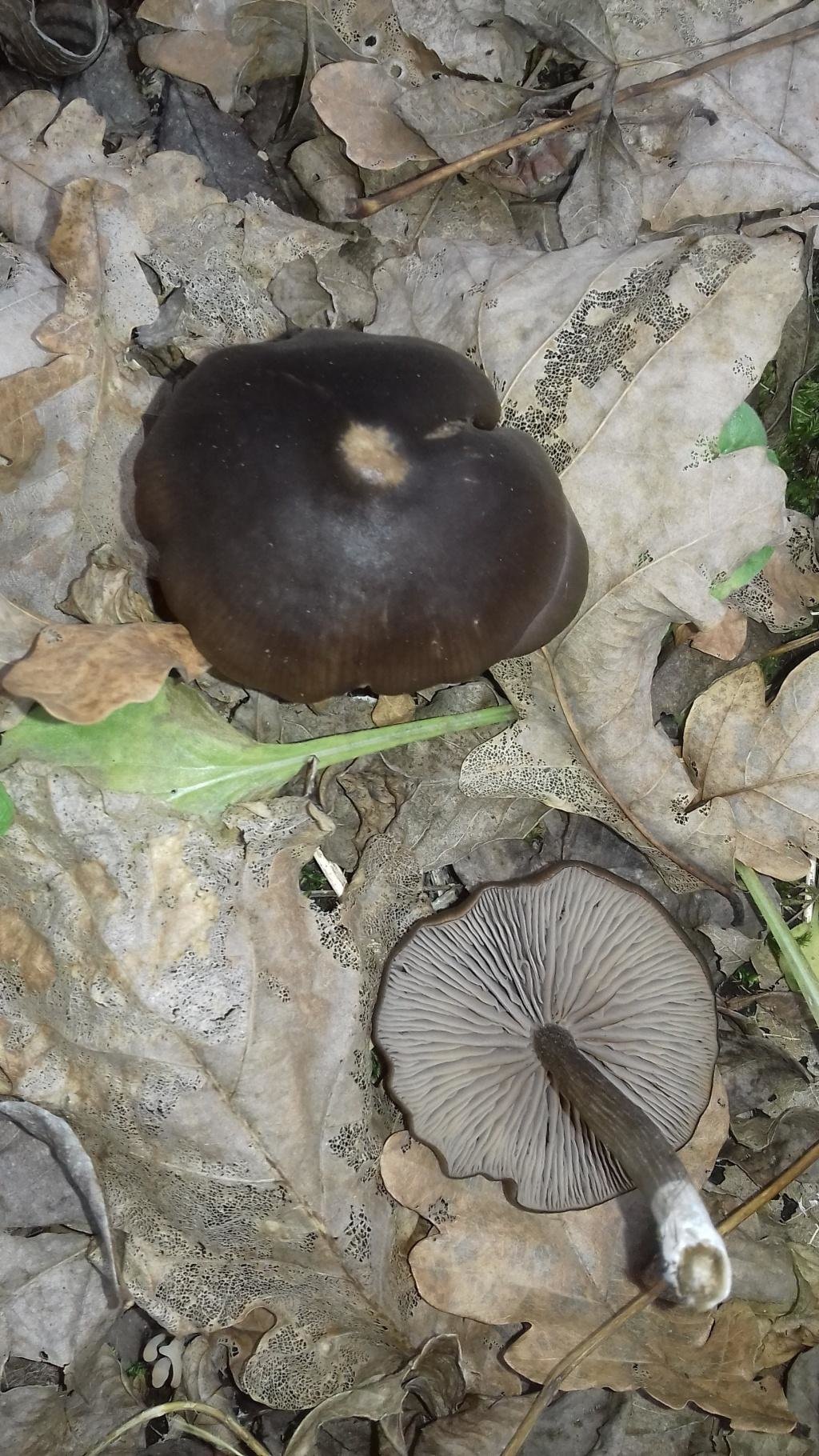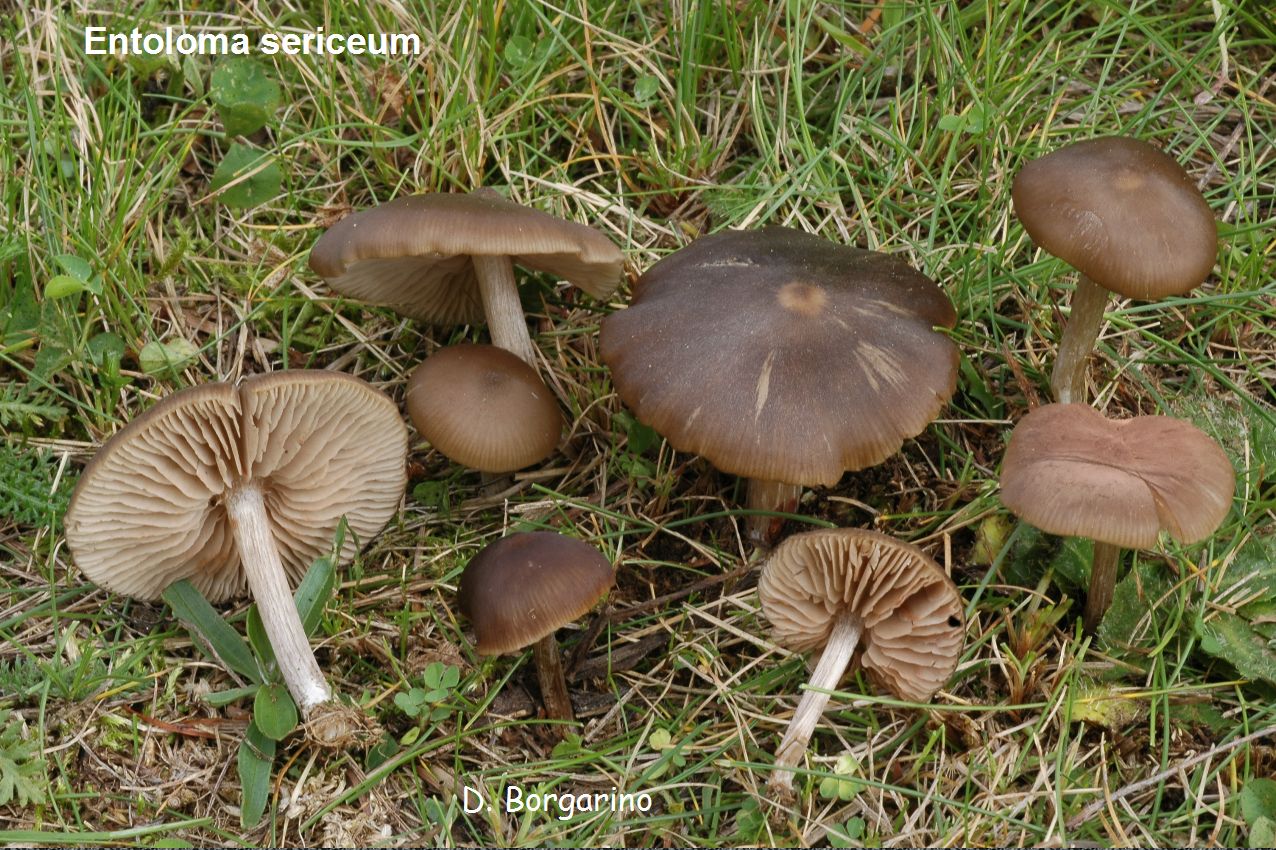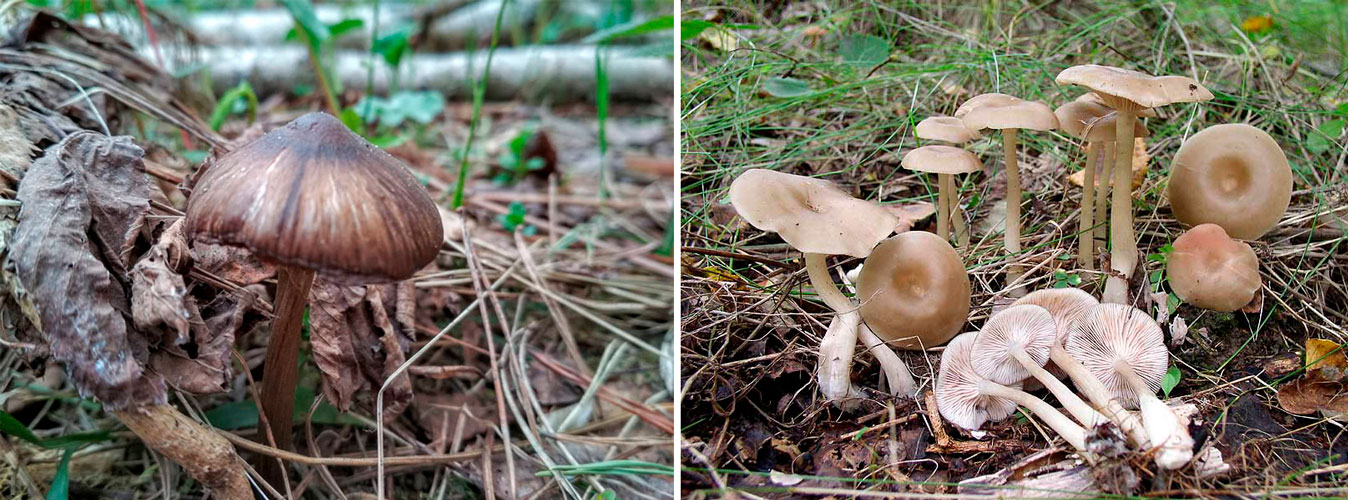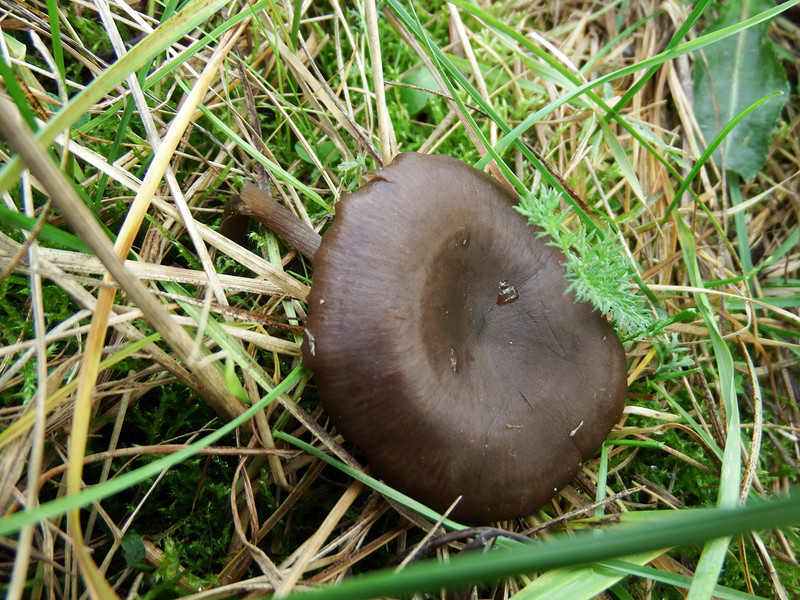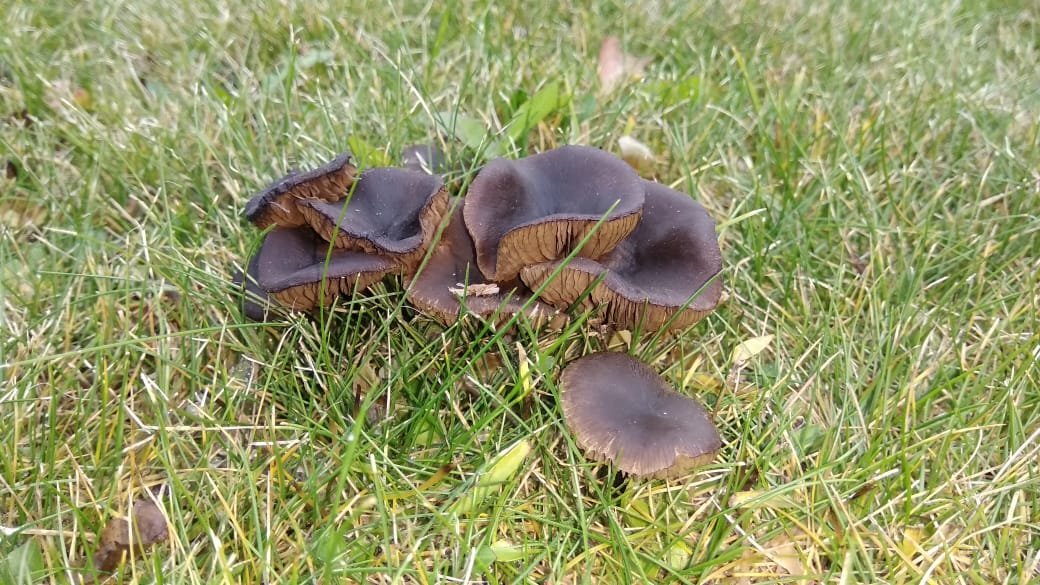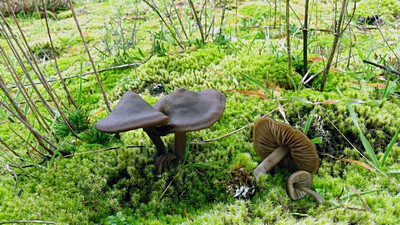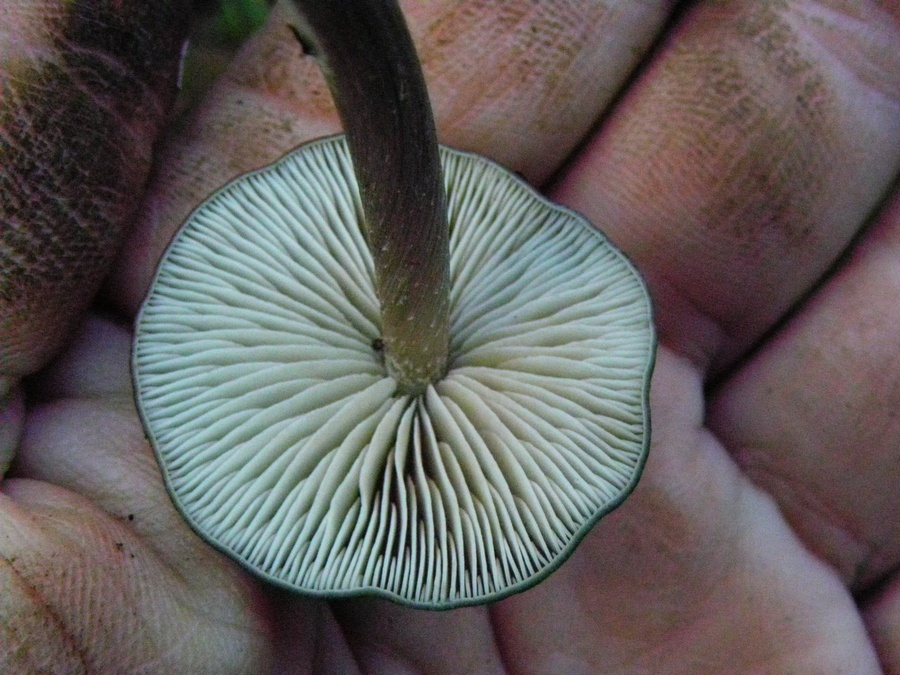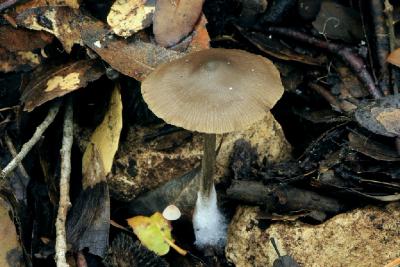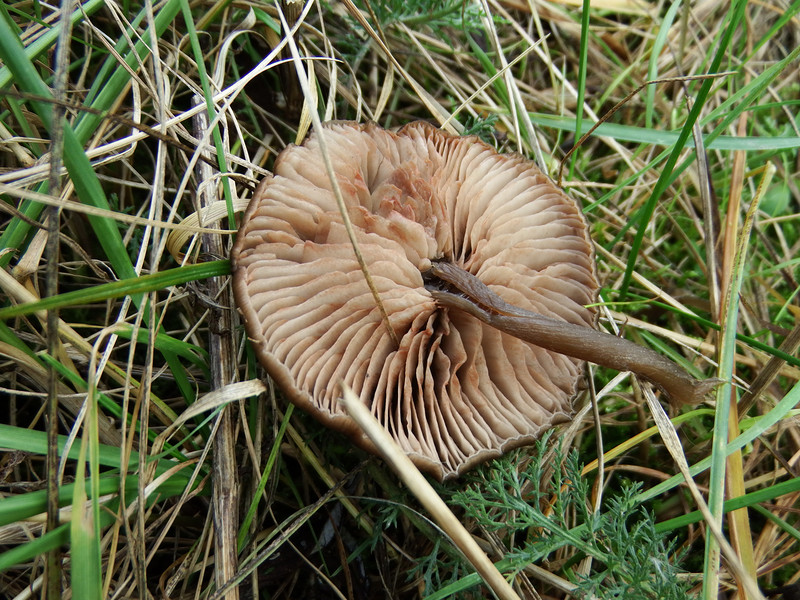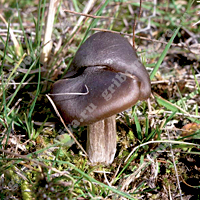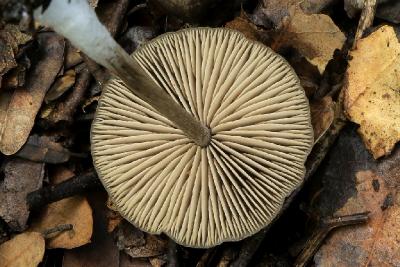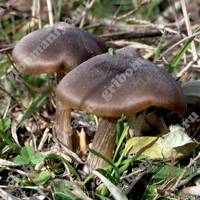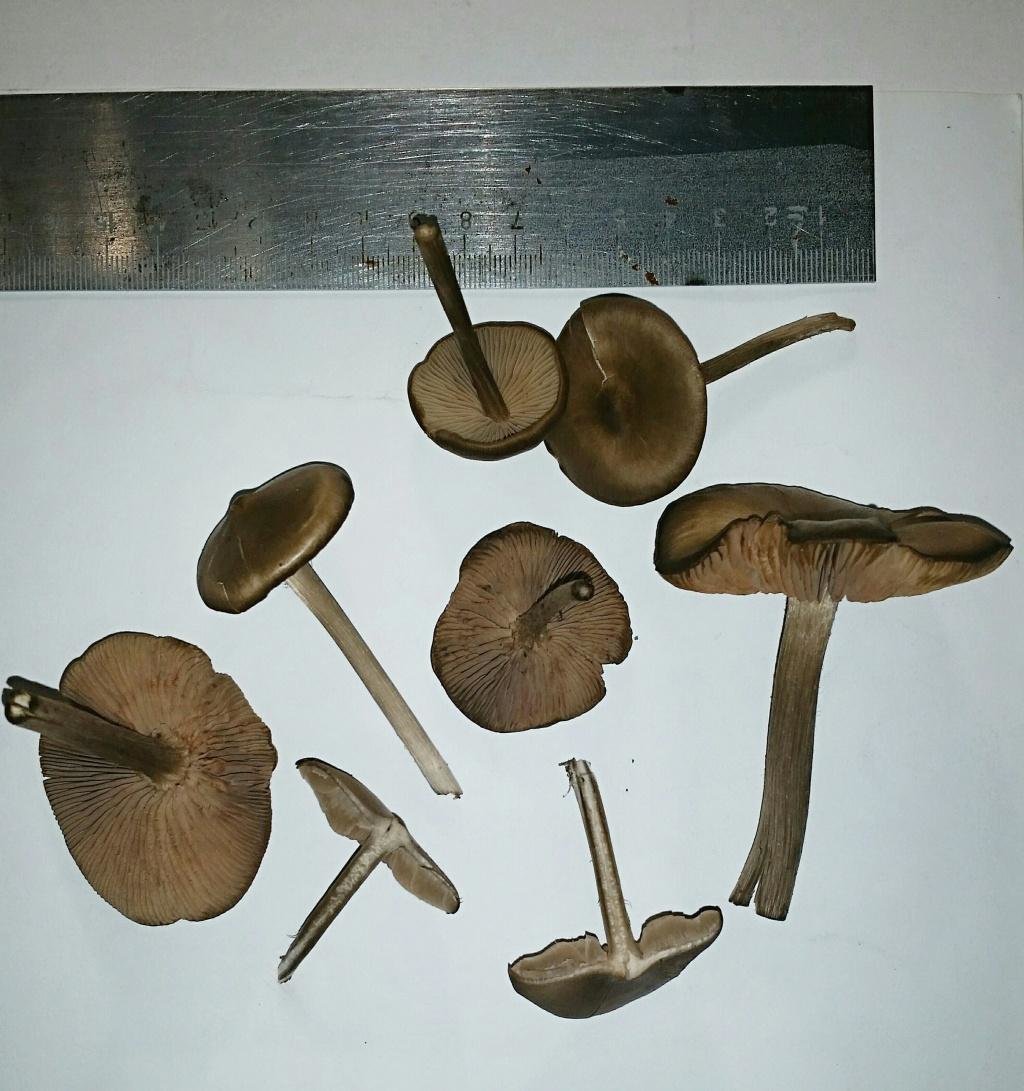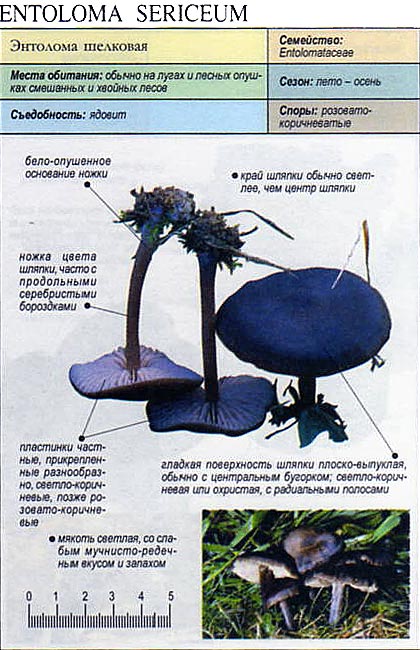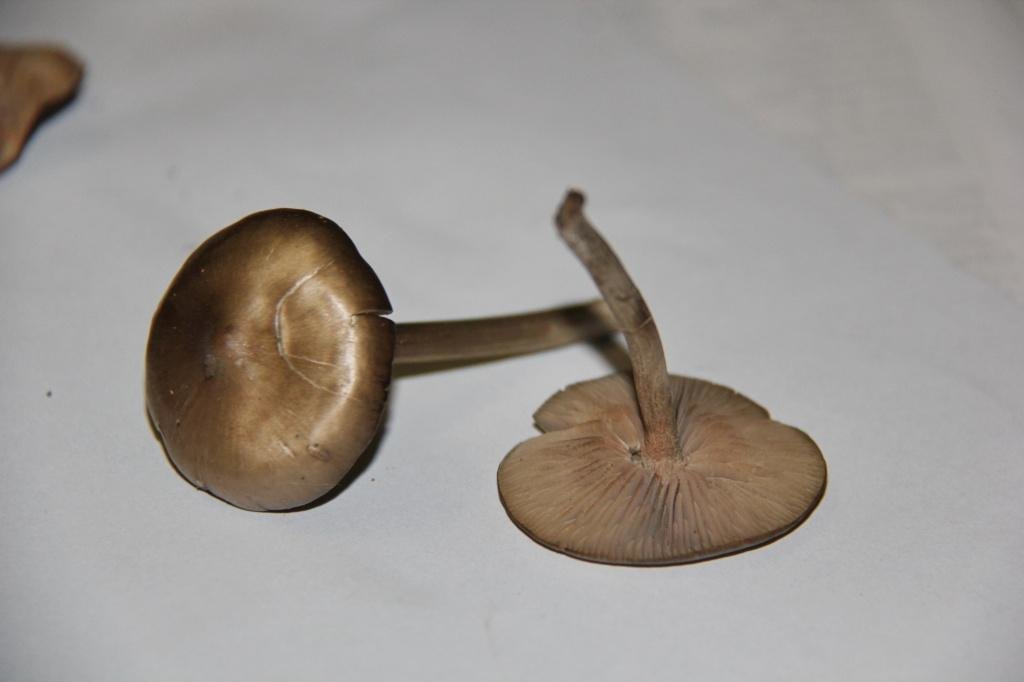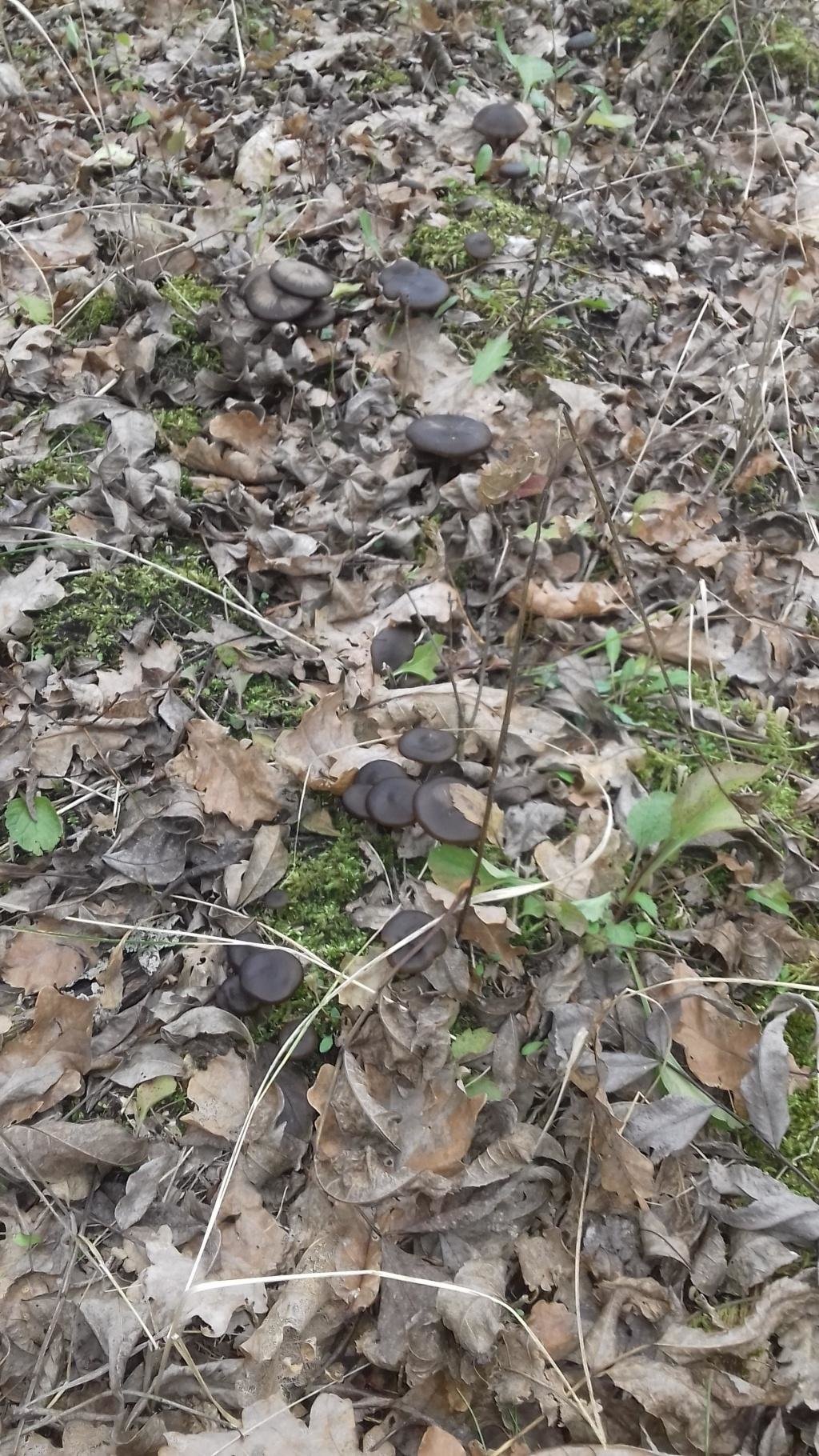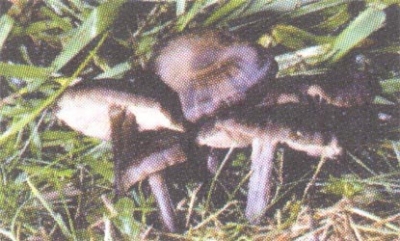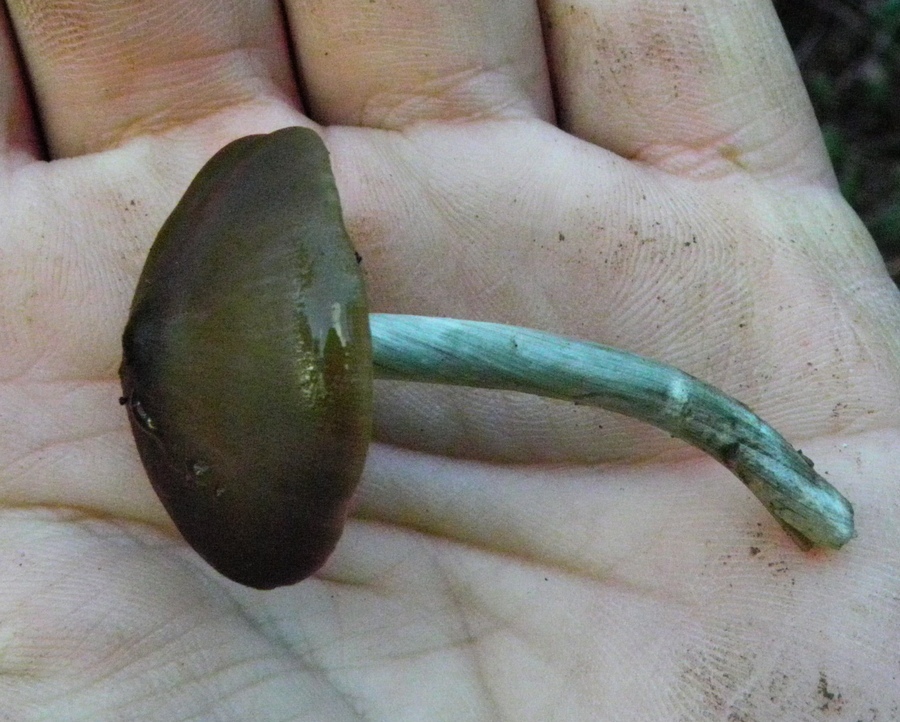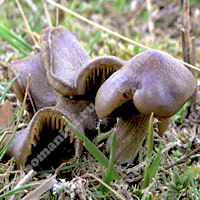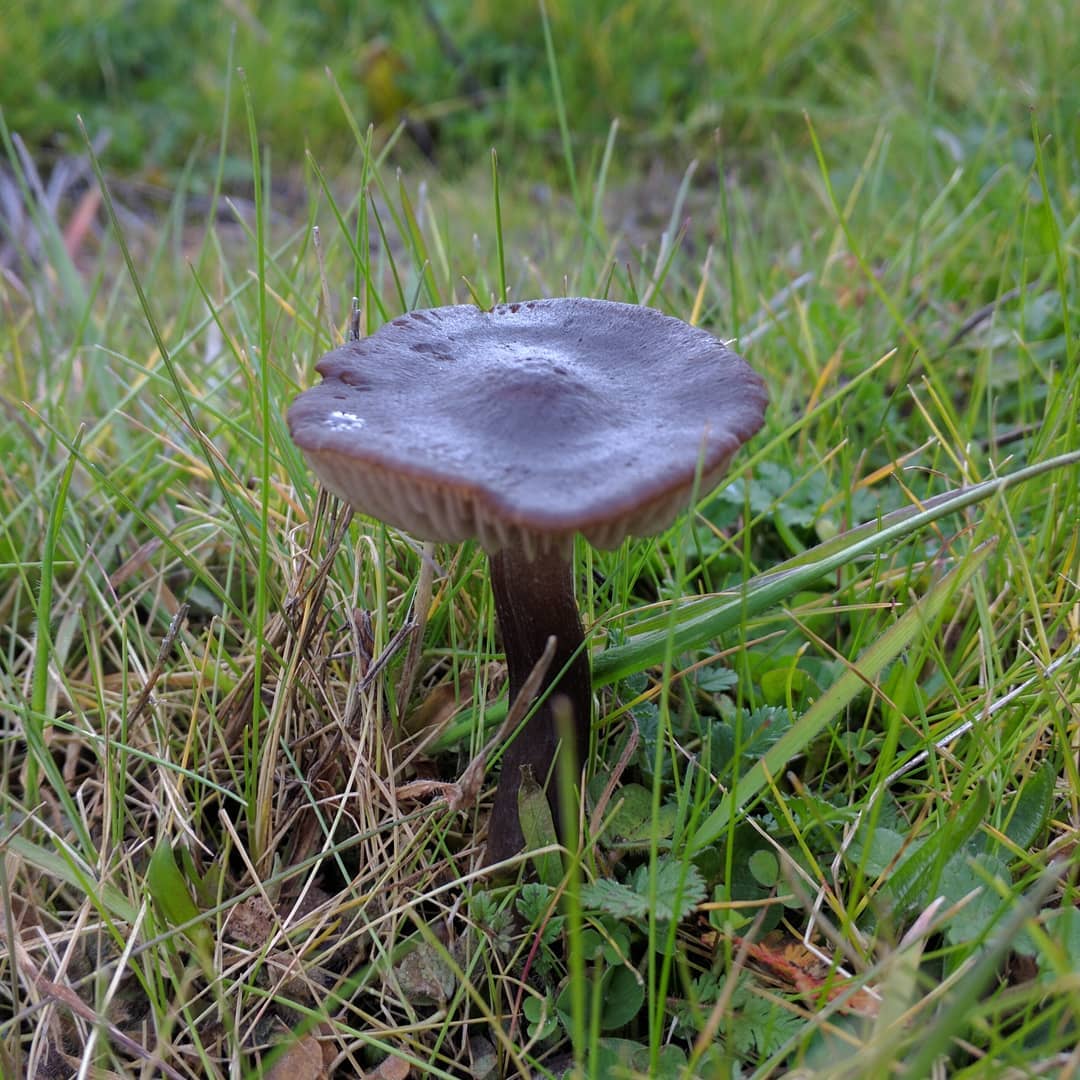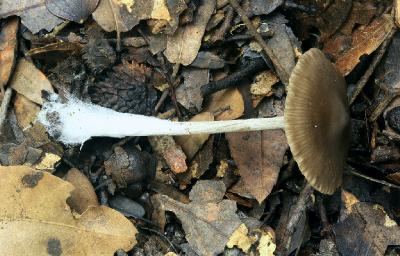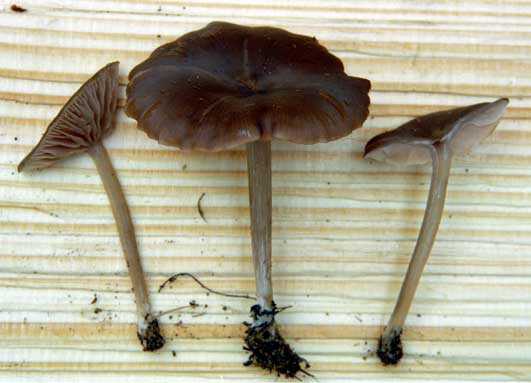How to cook properly

As a rule, the legs of the sublivings are not used for food purposes, which is due to the excessive rigidity of this part of the fruiting body. The fruit bodies of Entoloma clypeatum can be fried, used for soups and harvested for winter by pickling. The collected mushrooms should be carefully sorted out and washed, then carefully peeled and boiled until tender. Mushrooms that have undergone this preliminary preparation can be fried or used for other cooking methods.
Also Entoloma clypeatum is very well suited for pickling and pickling applications. In this case, preliminary soaking is not required, but the boiling process is mandatory. Salting can be carried out both by a long-term method according to a traditional recipe using oppression and salting for 30-40 days, or by a high-speed method according to a recipe for preparing russula.
Entoloma garden
Garden entoloma - lat. Entoloma clypeatum
In another way, this variety is called Edible Entoloma, Thyroid Pink Platter, Forest Entoloma, Thyroid Entoloma, Podzlivnik, Shield Entoloma, Podzherdelnik, Thorny Entoma or Podbrikosovik.
Translated from Latin, the word "clypeatum" means that the mushroom cap has the shape of a shield.
Mushroom cap
The diameter of the hats of the Edible Entoloma reaches 70-120 mm. Young mushrooms have a hat in the form of a bell-shaped cone or a hemisphere; in adults, it spreads unevenly: some areas become convex, others concave. Darkish mounds remain in the middle of the headdresses. The edges are usually wavy, occasionally fractured.
The surface color is white - gray, pale beige, gray - brown and gray - brown, and varies depending on the weather. On dry days, the hat brightens and remains silky - fibrous, in wet days it becomes sticky and dark.
The hats are filled with taut flesh that softens as it ripens - white or somewhat brown. It often gives off a pleasant mealy smell and tastes similar.
The hat bottom of the thyroid rose-plate is interspersed with wide sparse accrete plates with jagged edges. They differ in different lengths. Young plates are whitish, mature ones are pale pink, grayish pink or gray brown. The lamellar bottoms of old fungi become reddish.
Spores of Entoloma Gardena are in pink powder.
Stipe
The trunk of the Forest Entoloma has a curved cylindrical shape, often twisting. Its diameter is 10-40 mm, height is 100-120 mm. The leg of a young specimen is filled with fragile longitudinally ribbed pulp, but subsequently empties.
The legs of the Subslivnik have a whitish, pale pink or light ash color, at the bottom they are colored lighter. There is no ring.
Entoloma garden (Entoloma clypeatum)
Growing places
Garden entoloma is easy to find on the fertile lands of forests with deciduous trees, where there are birch, mountain ash and oak, even near roads and paths, on meadows and lawns. Also, as the name suggests, it bears fruit well in gardens, under pear and apple trees, pink, thorns, rosehips and hawthorn bushes.
Thyroid entoloma is collected on the North American continent, Ukrainian and Western European lands. In Russia, she inhabits the Leningrad region, in particular, St. Petersburg.
Fruiting usually occurs in numerous groups, extremely rarely - one by one, and falls in April (in warm regions) or June-July (in temperate climates). The mushroom can bear fruit in several stages.
Edibility
Thorny entoloma belongs to conditionally edible mushrooms, suitable for cooking various dishes after twenty minutes of boiling. It is salted and pickled.Western European residents consider this mushroom a delicacy, while residents of southern Russia consider it a traditional food product.
Description of poisonous entoloma
Entoloma venomous is the largest member of the genus. The diameter of its cap is most often 5-17 centimeters, but can reach 25 centimeters. The color of the cap in young specimens ranges from grayish-ocher to off-white; with age, the color becomes ash or gray-brown. The cap is smooth, sometimes there may be small folds in the central part. In wet weather, the cap becomes a little sticky, and when it dries, it becomes shiny.
The shape of the cap at a young age is hemispherical, it can be conical-bell-shaped with a rolled edge, over time it becomes flat-convex with a blunt wide tubercle in the center and a wavy or even edge, and in very old mushrooms it can become sunken.
The flesh of the rose leaf is thin and dense. At a break, the color of the pulp does not change. The taste is unpleasant and the odor can be mealy or rancid. The blades are sparse, wide, notched or with weakly adherent teeth. The color of the plates is first dirty yellow, then yellow-pink, pinkish or red, while the edges are darker.
The height of the leg of the poisonous entoloma ranges from 4 to 15 centimeters with a thickness of 1-3.5 centimeters. The stem is central, cylindrical, most often curved and thickened at the base. At first, the leg is dense, but in adulthood it becomes spongy. The surface of the leg is silky, white, and later grayish or ocher-yellow. If you press on the leg, it will turn pale brown. In the upper part of the leg there is a mealy bloom, and below it is naked.
Spore powder of pink color. Spores are hexagonal, slightly elongated, pink-yellow in color, smooth, with one or two drops of oil.
Ecology and distribution of the poisonous rose-leaf
Poisonous entoloma is a relatively rare fungus that grows sparsely. These mushrooms grow in the soil. The fruiting season begins at the end of May. They are found in mixed and deciduous forests, most often in parks and oak forests.
They form mycorrhiza with beech, oak, hornbeam, and in more rare cases - with willow and birch. Poisonous rose-leafed plants prefer heavy soils with a high lime content. These mushrooms live singly or in small groups. This is a thermophilic type of mushroom. On the territory of our country, they are found in the south of the European part and the northern Caucasus, and also grow in the south of Siberia.
Toxicity of the giant rose-leaf
It is a gastrointestinal poisonous fungus that, when eaten, irritates the gastrointestinal tract. Poisonous entoloma provokes a resinoid syndrome, accompanied by vomiting, abdominal pain and loose stools. These symptoms appear already after 30 minutes - 2 hours after the ingestion of toxins. It all starts with a headache and dizziness, and then diarrhea and severe vomiting are added.
As a rule, recovery occurs after 48-72 hours, but if a person has eaten a large amount of poisonous mushrooms, death can occur.
Poisoning treatment
Treatment consists in gastric lavage and the appointment of saline-type laxatives, as well as enterosorbents.
If severe gastroenteritis has developed, saline and glucose are administered to the victim. In addition, everyone else who used poisonous entoloma, and who did not show symptoms of poisoning, also washed the stomach and prescribed laxatives and enterosorbents.
Similar species
The danger of the rosacea lies in its resemblance to a number of poisonous mushrooms:
• The edible rose-leaf garden can be distinguished from its poisonous counterpart thanks to its hygrophilous cap and habitat - these mushrooms grow in meadows and gardens, and not in forests;
• Hanging plant is recognized by the plates descending to the leg, but its color is practically the same as poisonous entoloma;
• May ridge is characterized by frequent, narrow blades, mostly adherent, of light ocher or whitish color;
• The pigeon row is distinguished by a silky white cap with colored spots and flesh, which becomes pink on the cut;
• Smoky talker has narrow, often spaced cream or whitish plates, which slightly descend along the stem and are easily separated from the cap. The smoky talker smell can be floral or putrid;
• The common champignon can be easily distinguished from the poisonous rose-leaf with the help of the ring on the stem and the plates of a darker color;
• The pigeon row is characterized by a silky cap with colored spots and a pinkish flesh on the cut.
Among poisonous mushrooms, the greatest similarity is observed with the pressed entola. But the entholoma pushed through, just like the poisonous rose-leaf, is not harvested, so it is not scary to confuse these mushrooms.
Taxonomy, characteristics and description of the structure
According to the systematic nomenclature, Entoloma poisonous belongs to the Entoloma family, the Entoloma genus. Latin name and its synonym: Entoloma sinuatum and Rhodophyllus sinuatus.
This representative is also called:
- Giant rose-colored plate;
- Pink-colored yellowish-gray;
- Entoloma tin;
- Entoloma notched-lamellar.
Hat
The diameter of the cap varies in the range of 5–17 cm, however, representatives with an indicator of 25 cm are often found. Young mushrooms for a long time retain a bell-shaped, in some cases convex shape with tucked edges. With the passage of time and the growth of the mushroom, the cap becomes convex and flat at the ends. In the future, it forms a large tubercle in the center, and its edges become wavy and open. Old mushrooms are characterized by the presence of wrinkles in the middle of the cap. It is smooth to the touch, a little sticky after rain. The color is off-white, yellowish, ashy or brownish-gray.
Hymenophore
The hymenophore is the part of the fungus located under the cap. In entoloma, it is represented by plates. They are very weakly attached to the stem, rarely located. In color, there are both dirty yellow (in most cases in young mushrooms) and pink or even red (in older fruiting bodies). To the edges of the plate are painted in a darker color.
REFERENCE: Most of the representatives of poisonous enthola, which grow in Europe, have no yellow pigment in the hymenophore.
Cut pulp
The pulp is characterized by elasticity and high density, it is white and brownish in color. In the part of the cap, the tone does not change when it breaks. The flesh tastes rancid or has a mealy aroma.
Leg
The fungus is characterized by a central location of the leg, which thickens slightly at the base. It has a cylindrical shape, slightly compressed at the edges. Smooth, silky, dense to the touch. In the part near the cap it has a mealy coating. The leg reaches 10 cm in height, up to 3 cm in width. The color is mainly white, in some cases a gray tint can be traced.
A bit of history
For the first time, they learned about the mushroom in 1788 thanks to the doctor and botanist Pierre Bueyard. A more detailed description was compiled by H.Person (mycologist) at the beginning of the 19th century.
Description
The largest representative of the genus entolom.
The hat is 5-17 (up to 25) cm in diameter, in young mushrooms - from dirty-white to gray-ocher, in maturity - gray-brown, ashy, smooth, sometimes finely folded in the center, slightly sticky in damp weather, shiny when dry ... In young mushrooms, the cap is hemispherical or conical-bell-shaped with a tucked edge, retaining this shape for a long time, later it is flat-convex or prostrate with a lowered even or wavy edge and a wide blunt tubercle in the middle, sometimes in old specimens it is sunken, irregularly rounded.
The pulp is white, thick, firm. Does not change color when broken. The taste is described as slurred or unpleasant; the smell is mealy or rancid.
8-15 mm wide, wide, sparse, poorly adherent toothed or notched, weakly sore; first dirty yellow, later yellowish pink, pink or reddish, with darker edges.
Leg 4-15 cm high and 1-3.5 cm thick, central, usually curved at the base, cylindrical, sometimes compressed, often thickened towards the base, dense, but tapering downwards again; in young mushrooms it is solid, at maturity with a spongy filling. The surface of the leg is white, silky, later ocher-yellowish or grayish, when pressed - pale brownish; mealy above, naked below.
Spore powder pink. Spores 8-11 x 7-9.5 microns, hexagonal, isodiametric (rounded) or slightly elongated, smooth, pinkish-yellow, with 1-2 drops of oil. Basidium with 4 basidiospores. Cystyds are absent. The surface of the cap is ixokutis, consisting of narrow, cylindrical hyphae 2-5 microns thick with buckles. The pigment is very light, intracellular.
A form devoid of yellow hymenophore coloration is rare, but found in Austria, France and the Netherlands.
How to pick mushrooms (video)
The rules of mushroom hunting - effective, competent and safe - are in the material of "AiF-SK".
They are called "vegetable" meat, and the hunt for them is a "quiet" hunt. Mushroom gathering in the Stavropol Territory has long become a useful hobby for some local residents. And, taking the container, they go to the woods. Mushroom gurus, of course, are not limited to forests alone - they know especially promising places of the region, from where they can return with a solid catch.
Mushroom routes
The fat mushroom dot on the map of the Stavropol Territory is, of course, Kavminvody. In the mountainous area, even a non-professional can get a classic mushroom set - there are boletus, boletus, chanterelles, honey agarics, milk mushrooms and russula.
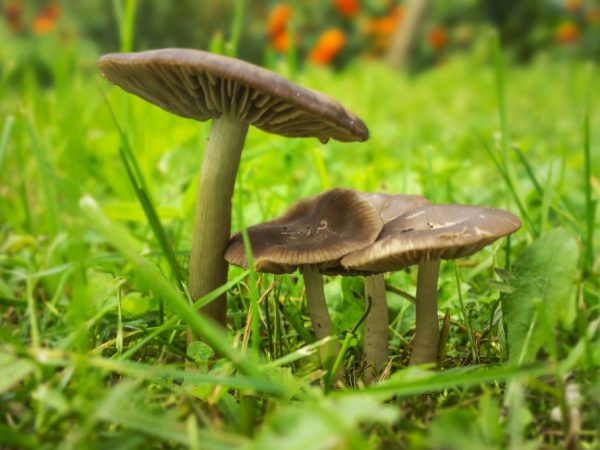
The route through the Russian forest can also be successful for a mushroom hunter. Here, according to the reviews of experienced mushroom pickers, it is easy to find boletus. The beams of the Stavropol Territory - Verbovaya, Lipovaya, Vishnevaya and Rattle - are also considered to be yielding places.
A slightly smaller scale, but the same wide range of species is also found in the Taman forest. Another forest area - Mamaysky - will be of interest to those who expect to return home with boletus, ryadovki and mushrooms.
Another potentially successful location for "quiet" hunters is the Beshpagirskie heights on the Stavropol Upland. Here, according to experienced mushroom pickers, you can even get mushrooms. The area near the Oak Forest was also unofficially declared to be harvestable. Here grow huge raincoats, meadow mushrooms, chanterelles and russula.
We all know how porcini mushrooms, honey mushrooms and russula look like. However, these are far from the most popular mushrooms in the Stavropol Territory - for the most part, the Stavropol lands offer the inhabitant completely unfamiliar representatives of the so-called "third kingdom".
Podlivnik. One of the most common types of mushrooms in the Stavropol Territory. It is also called - podabrikosovik, scutellum entoloma, edible entoloma, or thyroid rosacea. This mushroom, as is clear from the popular names, can be found under fruit trees. You can also find a podlivnik under birches, dumas and rose bushes.
Definitioner
- Basidia (Basidia)
-
Lat. Basidia. A specialized structure of sexual reproduction in fungi, inherent only in Basidiomycetes. Basidia are terminal (end) elements of hyphae of various shapes and sizes, on which spores develop exogenously (outside).
Basidia are diverse in structure and method of attachment to hyphae.
According to the position relative to the axis of the hypha, to which they are attached, three types of basidia are distinguished:
Apical basidia are formed from the terminal cell of the hypha and are located parallel to its axis.
Pleurobasidia are formed from lateral processes and are located perpendicular to the axis of the hypha, which continues to grow and can form new processes with basidia.
Subasidia are formed from a lateral process, turned perpendicular to the axis of the hypha, which, after the formation of one basidium, stops its growth.
Based on morphology:
Holobasidia - unicellular basidia, not divided by septa (see Fig. A, D.).
Phragmobasidia are divided by transverse or vertical septa, usually into four cells (see Fig. B, C).
By type of development:
Heterobasidia consists of two parts - hypobasidia and epibasidia developing from it, with or without partitions (see Fig. C, B) (see Fig. D).
Homobasidia is not divided into hypo- and epibasidia and in all cases is considered holobasidia (Fig. A).
Basidia is the place of karyogamy, meiosis and the formation of basidiospores. Homobasidia, as a rule, is not functionally divided, and meiosis follows karyogamy in it. However, basidia can be divided into probasidia - the site of karyogamy and metabasidia - the site of meiosis. Probasidium is often a dormant spore, for example in rust fungi. In such cases, probazidia grows with metabasidia, in which meiosis occurs and on which basidiospores are formed (see Fig. E).
See Karyogamy, Meiosis, Gifa.
- Pileipellis
-
Lat. Pileipellis, skin - differentiated surface layer of the cap of agaricoid basidiomycetes. The structure of the skin in most cases differs from the inner flesh of the cap and may have a different structure. The structural features of pileipellis are often used as diagnostic features in descriptions of fungi species.
According to their structure, they are divided into four main types: cutis, trichoderma, hymeniderma and epithelium.
See Agaricoid fungi, Basidiomycete, Cutis, Trichoderma, Gimeniderm, Epithelium.
- Cutis
-
The type of cap skin, consists of creeping non-gelatinized hyphae located parallel to the surface. The surface of the cap looks smooth.
Lat. Cutis.
See Gifa.
The appearance of the gray-white entoloma
In youth, the cap of the entoloma is gray-white conical, then it opens and transforms into an almost extended one, while a blunt dark tubercle usually remains in the center. Its diameter is 3-10 centimeters. The color of the cap is yellow-brown, zonal. In dry weather, the zoning is more pronounced, and the general background becomes lighter.
The flesh is whitish in color, in the center of the cap it is thicker, and towards the edges it becomes thinner. Often, plates appear through the edges of the cap. The pulp has a mealy taste and smell.
The plates in young specimens are whitish, then they become creamy, and even later - dark pink. The plates are located quite often, they are adherent and wide. Since the lamellae are irregular in width, they can appear disheveled, especially in older specimens. Spore powder pink.

The gray-white entoloma's leg is long - about 4-10 centimeters and 0.5-1.5 centimeters thick. It is cylindrical, often curved; at the base it gradually becomes thicker. The color of the leg is white, and the surface is covered with small longitudinal fibrous light scales. The flesh of the leg is more fragile, white in color.
Places of growth and fruiting time of gray-white entoloma
These mushrooms are found from late summer, and fruiting continues until mid-autumn. Gray-white entolomes grow in forests of various types, in gardens and parks.
Gray-white entoloma is not used for food, since it is inedible, even, possibly, poisonous.

Similar species
The bluish-white entoloma is outwardly similar to the pressed entoloma, which occurs at about the same period. But entoloma pressed down is much thinner and does not emit a flour smell. Entoloma perforated is an inedible fungus. Her hat is hygrophilous, 3-10 centimeters in diameter, from convex to outstretched in shape. The color of the cap can be gray-brown, olive-gray or reddish. The pulp of this mushroom smells like lye. His leg is high, thin, grayish in color.
Entoloma grows squeezed from August to September, found mainly in deciduous forests. These mushrooms are abundant in damp places.
The garden entoloma also resembles the gray-white entoloma.But it differs in that it bears fruit in the spring. In addition, pinkish plates are a characteristic feature of the garden entoloma. Garden entoloma belongs to conditionally edible mushrooms. It has a conical or outstretched cap with a diameter of 7-12 centimeters. Its surface is smooth, and becomes sticky in the rain. The color of the cap is beige, white-gray, gray-brown or gray-brown. The leg is often twisted, up to 12 centimeters high.

Garden entoloma can be found under oak, birch and rowan trees. These fungi inhabit the nutrient-rich soil of gardens, meadows and lawns. They can often be found under fruit trees. These entolomes are rarely found alone, more often they bear fruit in groups.




